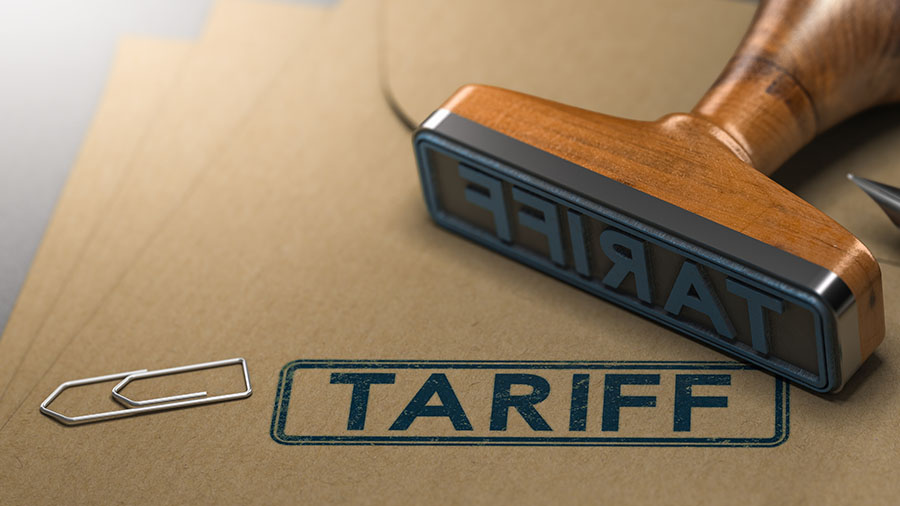China
China Takes Note As Wall Street Gets Occupied
Getty Images Tourists from China chatting with protesters at Occupy Chicago, an offshoot of the Occupy Wall Street protests. The Occupy Wall Street protests in the U.S. have drawn increasing attention in China, where media figures and China’s voluble online community are arguing over what it means for the U.S. Earlier this week, a small group of pensioners in China’s central Henan province even rallied in support of the U.S. protesters, though nostalgia for Mao Zedong’s bygone era appeared to be a main driver. “Resolutely supporting the American people’s mighty ‘Wall Street revolution,’” read an unfurled banner during the demonstration Thursday at a park in the provincial capital of Zhengzhou, according to video footage posted online as well as the leftist website Utopia. The website said several hundred people took part. It seems safe to say–as Obama administration officials debate whether to adopt a more populist tone and appeal to the protesters as a voting bloc—that this is not what they had in mind. Based on the online video, it was a quiet protest. Some of the old men fumbled with their red arm bands, which called for world-wide solidarity. Many simplly stood quietly, hands clasped behind their backs. “United, proletarians around the world,” was one of the slogans the pensioners chanted. The Henan demonstration was a far cry from Mao’s anti-rightist campaigns during the early years of the Communist party’s rule, but a deeper discussion has been brewing within China’s media and Internet about the protests. The protests have become big news in China and have been closely followed by the local media. They have also drawn mixed reactions. Some have been pleased to see frictions in the U.S., showing that its occasionally finger-waving democratic rival can be less than perfect. Still others sympathized with the protesters, which is perhaps understandable in a nation grappling with its own surging brand of capitalism and where major institutions hold so much power. Late last month, a strongly worded op-ed appeared in the state-run China Daily newspaper accusing the U.S. media of ignoring the demonstrations. The piece, penned by Chen Weihua, a senior newspaper staffer based in New York, said major media companies in the U.S. had imposed a “blackout” on coverage of the protests. Why have the journalists “who made their names covering various protests around the world, suddenly become silent in reporting the mass rally?” Mr. Chen wrote. The editorial drew a heated response from one of China’s most popular political bloggers, Yang Hengjun, who said growing media coverage in the U.S. demonstrated otherwise. “For a paper like China Daily, supported by taxpayers, to publish such an irresponsible editorial — well, drawing the scorn of others is one thing, but if you blatantly lie and deceive to this degree, that reflects badly on China’s government! It reflects badly on the Chinese people! It is completely shameful!” Mr. Yang wrote (translated to English here ). “Perhaps the author harbors ulterior motives, wanting his false news to turn the attention of all Chinese who know how to conduct a basic online search to real news about non-democratic countries.” And on Sina Weibo, the popular microblogging service, where on any given day it’s not difficult to find talk of democracy and political reform, the protests presented a chance for some to challenge the U.S. political and economic systems. “American democracy is serving who?” one user wrote. “Are the common folks truly able to enjoy freedom, equality, and democracy?” –Brian Spegele. Follow him on Twitter @bspegele.

- Getty Images
- Tourists from China chatting with protesters at Occupy Chicago, an offshoot of the Occupy Wall Street protests.
The Occupy Wall Street protests in the U.S. have drawn increasing attention in China, where media figures and China’s voluble online community are arguing over what it means for the U.S.
Earlier this week, a small group of pensioners in China’s central Henan province even rallied in support of the U.S. protesters, though nostalgia for Mao Zedong’s bygone era appeared to be a main driver.
“Resolutely supporting the American people’s mighty ‘Wall Street revolution,’” read an unfurled banner during the demonstration Thursday at a park in the provincial capital of Zhengzhou, according to video footage posted online as well as the leftist website Utopia. The website said several hundred people took part.
It seems safe to say–as Obama administration officials debate whether to adopt a more populist tone and appeal to the protesters as a voting bloc—that this is not what they had in mind.
Based on the online video, it was a quiet protest. Some of the old men fumbled with their red arm bands, which called for world-wide solidarity. Many simplly stood quietly, hands clasped behind their backs.
“United, proletarians around the world,” was one of the slogans the pensioners chanted.
The Henan demonstration was a far cry from Mao’s anti-rightist campaigns during the early years of the Communist party’s rule, but a deeper discussion has been brewing within China’s media and Internet about the protests.
The protests have become big news in China and have been closely followed by the local media. They have also drawn mixed reactions. Some have been pleased to see frictions in the U.S., showing that its occasionally finger-waving democratic rival can be less than perfect. Still others sympathized with the protesters, which is perhaps understandable in a nation grappling with its own surging brand of capitalism and where major institutions hold so much power.
Late last month, a strongly worded op-ed appeared in the state-run China Daily newspaper accusing the U.S. media of ignoring the demonstrations. The piece, penned by Chen Weihua, a senior newspaper staffer based in New York, said major media companies in the U.S. had imposed a “blackout” on coverage of the protests.
Why have the journalists “who made their names covering various protests around the world, suddenly become silent in reporting the mass rally?” Mr. Chen wrote.
The editorial drew a heated response from one of China’s most popular political bloggers, Yang Hengjun, who said growing media coverage in the U.S. demonstrated otherwise.
“For a paper like China Daily, supported by taxpayers, to publish such an irresponsible editorial — well, drawing the scorn of others is one thing, but if you blatantly lie and deceive to this degree, that reflects badly on China’s government! It reflects badly on the Chinese people! It is completely shameful!” Mr. Yang wrote (translated to English here). “Perhaps the author harbors ulterior motives, wanting his false news to turn the attention of all Chinese who know how to conduct a basic online search to real news about non-democratic countries.”
And on Sina Weibo, the popular microblogging service, where on any given day it’s not difficult to find talk of democracy and political reform, the protests presented a chance for some to challenge the U.S. political and economic systems.
“American democracy is serving who?” one user wrote. “Are the common folks truly able to enjoy freedom, equality, and democracy?”
–Brian Spegele. Follow him on Twitter @bspegele.
Annual inflows of foreign direct investment rose to nearly $108 billion in 2008.
The Chinese government seeks to add energy production capacity from sources other than coal and oil, and is focusing on nuclear and other alternative energy development.
China is the world’s fastest-growing major economy, with an average growth rate of 10% for the past 30 years.
Available energy is insufficient to run at fully installed industrial capacity, and the transport system is inadequate to move sufficient quantities of such critical items as coal.
The two most important sectors of the economy have traditionally been agriculture and industry, which together employ more than 70 percent of the labor force and produce more than 60 percent of GDP.
A report by UBS in 2009 concluded that China has experienced total factor productivity growth of 4 per cent per year since 1990, one of the fastest improvements in world economic history.
The market-oriented reforms China has implemented over the past two decades have unleashed individual initiative and entrepreneurship, whilst retaining state domination of the economy.
China now ranks as the fifth largest global investor in outbound direct investment (ODI) with a total volume of $56.5 billion, compared to a ranking of 12th in 2008, the Ministry of Commerce said on Sunday.
“China is now the fifth largest investing nation worldwide, and the largest among the developing nations,” said Shen Danyang, vice-director of the ministry’s press department.
China is aiming to be the world’s largest new energy vehicle market by 2020 with 5 million cars.
China’s challenge in the early 21st century will be to balance its highly centralized political system with an increasingly decentralized economic system.
Agriculture is by far the leading occupation, involving over 50% of the population, although extensive rough, high terrain and large arid areas – especially in the west and north – limit cultivation to only about 10% of the land surface.
In terms of cash crops, China ranks first in cotton and tobacco and is an important producer of oilseeds, silk, tea, ramie, jute, hemp, sugarcane, and sugar beets.
Hogs and poultry are widely raised in China, furnishing important export staples, such as hog bristles and egg products.
Oil fields discovered in the 1960s and after made China a net exporter, and by the early 1990s, China was the world’s fifth-ranked oil producer.
China is among the world’s four top producers of antimony, magnesium, tin, tungsten, and zinc, and ranks second (after the United States) in the production of salt, sixth in gold, and eighth in lead ore.
In addition, implementation of some reforms was stalled by fears of social dislocation and by political opposition, but by 2007 economic changes had become so great that the Communist party added legal protection for private property rights (while preserving state ownership of all land) and passed a labor law designed to improve the protection of workers’ rights (the law was passed amid a series of police raids that freed workers engaged in forced labor).
As part of its continuing effort to become competitive in the global marketplace, China joined the World Trade Organization in 2001; its major trade partners are the United States, Japan, South Korea, Taiwan, and Germany.
China
China’s New Tariff Law: Streamlining and Standardizing Current Tariff Regulations

China’s new Tariff Law consolidates import and export duties, clarifies rules for imposing counter-tariffs, and sets a December 1, 2024 effective date. It codifies existing practices on cross-border e-commerce and rules on the origin of goods into law, impacting trade relations.
China’s new Tariff Law consolidates rules on import and export duties that were previously implemented via several legal documents and makes important clarifications and additions to prior regulations. Among other changes, it stipulates provisions for the Chinese government to impose counter-tariffs on imported goods, codifying these powers into law for the first time. We outline all the notable updates to the China Tariff Law and discuss the implications for the country’ current trade relations.
On April 26, 2024, the National People’s Congress (NPC), China’s legislature, adopted the Tariff Law of the People’s Republic of China (the “Tariff Law”) after several rounds of revisions.
The new Tariff Law will replace the Import and Export Tariff Regulations of the People’s Republic of China, which fall under the purview of the State Council, and adopts many of its provisions.
Previously, Chinese law had not stipulated legislative powers to implement countervailing tariffs, although China was nonetheless able to impose counter-tariffs on trade partners through other means.
China’s new Tariff Law comes into effect on December 1, 2024.
China’s Tariff Law elevates several existing provisions and practices to the level of law. For instance, Article 3 of the Tariff Law clarifies the obligations of cross-border e-commerce platforms for tariff withholding and implementing consolidated taxation.
The Tariff Law also solidifies the rules and regulations on the origin of goods, stipulating that the application of tariff rates shall comply with the corresponding rules of origin. Although this has been previously implemented in practice, it is the first time this has been codified into law.
This article is republished from China Briefing. Read the rest of the original article.
China Briefing is written and produced by Dezan Shira & Associates. The practice assists foreign investors into China and has done since 1992 through offices in Beijing, Tianjin, Dalian, Qingdao, Shanghai, Hangzhou, Ningbo, Suzhou, Guangzhou, Dongguan, Zhongshan, Shenzhen, and Hong Kong. Please contact the firm for assistance in China at china@dezshira.com.
China
Outlook on Bilateral Trade and Investment between China and United Arab Emirates (UAE)

The UAE and China have a strong partnership, with the UAE being China’s top trade partner in the Arab world. Both countries collaborate on various sectors like logistics and technology, showcasing mutual commitment to economic growth and global cooperation. High-level trade and investments continue to drive their relationship.
The UAE and China share a robust partnership integral to both countries’ development and foreign policy goals, exemplifying a model of collaboration. Bilateral trade thrives, with the UAE as China’s top trade partner in the Arab world, while investments span key sectors like logistics and technology. This comprehensive strategic partnership continues to evolve, showcasing mutual commitment to economic growth and global cooperation.
The United Arab Emirates (UAE) holds a significant position in China’s trade and commercial connections within the Middle East, particularly in the Arab Gulf region. This partnership is integral to China’s broader strategic initiatives, including the Belt and Road Initiative (BRI), which the UAE actively supports.
Additionally, the UAE plays a crucial role in advancing China’s foreign policy objectives, such as enhancing South-South cooperation, particularly in technical collaboration among developing nations and the Global South in areas like resources and technology.
In this article, we delve into the dynamics of bilateral trade and investment between the UAE and China, exploring the key factors driving their economic relationship and the opportunities it presents for mutual growth and prosperity.
China and the UAE first established their diplomatic relations in 1984. While China has an embassy in Abu Dhabi and a consulate general in Dubai, the UAE has a consulate general in Hong Kong and an embassy in Beijing. China and the UAE have long been close partners, collaborating extensively on economic, political, and cultural fronts.
In 2018, Chinese President Xi Jinping went on a state visit to the UAE, making history as the first Chinese head of state to visit the country in the previous 29 years. The visit was instrumental in lifting bilateral relations to a ‘comprehensive strategic partnership’.
High-level trade has always been the foundation of bilateral ties. Bilateral commerce between China and the UAE reached new heights in 2021, surpassing US$75.6 billion. Additionally, as of 2022, about 6,000 Chinese businesses operate in the UAE, with a sizable Chinese population working primarily in the infrastructure and energy sectors. The UAE is also China’s second-largest economic partner in the Middle East, after Saudi Arabia.
This article is republished from China Briefing. Read the rest of the original article.
China Briefing is written and produced by Dezan Shira & Associates. The practice assists foreign investors into China and has done since 1992 through offices in Beijing, Tianjin, Dalian, Qingdao, Shanghai, Hangzhou, Ningbo, Suzhou, Guangzhou, Dongguan, Zhongshan, Shenzhen, and Hong Kong. Please contact the firm for assistance in China at china@dezshira.com.
China
2024 Tax Incentives for Manufacturing Companies in China

China offers various tax incentives to boost the manufacturing industry. The Ministry of Finance and State Tax Administration provide guidelines on eligibility and policies. VAT exemptions and refunds are available for companies producing specific goods or services, with a monthly refund option for deferred taxes.
China implements a wide range of preferential tax policies to encourage the development of the country’s manufacturing industry. We summarize some of the main manufacturing tax incentives in China and explain the basic eligibility requirements that companies must meet to enjoy them.
China’s Ministry of Finance (MOF) and State Tax Administration (STA) have released guidelines on the main preferential tax and fee policies available to the manufacturing industry in China. The guidelines consolidate the main preferential policies currently in force and explain the main eligibility requirements to enjoy them.
To further assist companies in identifying the preferential policies available to them, we have outlined some of the main policies currently available in the manufacturing industry, including links to further resources.
For instance, VAT is exempted for:
Companies providing the following products and services can enjoy immediate VAT refunds:
Companies in the manufacturing industry that meet the conditions for deferring tax refunds can enjoy a VAT credit refund policy. The policy allows companies to receive the accumulated deferred tax amount every month and the remaining deferred tax amount in a lump sum.
The policy is not exclusive to the manufacturing industry and is also available to companies in scientific research and technical services, utilities production and supply, software and IT services, and many more.
This article is republished from China Briefing. Read the rest of the original article.
China Briefing is written and produced by Dezan Shira & Associates. The practice assists foreign investors into China and has done since 1992 through offices in Beijing, Tianjin, Dalian, Qingdao, Shanghai, Hangzhou, Ningbo, Suzhou, Guangzhou, Dongguan, Zhongshan, Shenzhen, and Hong Kong. Please contact the firm for assistance in China at china@dezshira.com.












